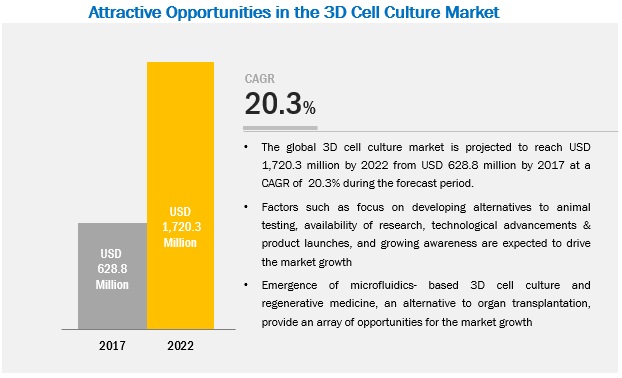The 3D cell culture market is expected to reach $1,720.3 Million by 2022 from $570.4 Million in 2016 growing at a CAGR of 20.3%
The Research report provides a detailed overview of the major drivers, restraints, challenges, opportunities, current market trends, and strategies impacting the 3D Cell Culture Market, along with revenue estimates & forecasts and market share analysis.
Moreover, the study showcases back-to-back parameters like application, improvement, product growth, and diverse structures & key processes. The report highlights the in-depth analysis of various critical parameters such as profit & loss statistics, product value, production capability, production process, and many more.
Factors such as rising focus on developing alternative methods for animal testing, funding initiatives from government and private investors, technological advancements and product launches, and growing awareness are driving the growth of the market.
Download PDF Brochure:
https://www.marketsandmarkets.com/pdfdownloadNew.asp?id=191072847
3D Cell Culture Market Segmentation:
1. By Product
2. By Application
3. By End Users
4. By Region
The Major Players Opearting in the 3D Cell Culture Market are:
Prominent players in this market include Thermo Fisher (US), Corning (US), Lonza (Switzerland), Merck (Germany), ReproCELL (Japan), and InSphero (Switzerland). The other players operating in this market include Global Cell Solutions (US.), Synthecon (US), 3D Biotek (US), Kuraray (Japan), Hamilton Company (US), Mimetas (Netherlands), Emulate (US), Nano3D Biosciences (US), and QGel (Switzerland).
Thermo Fisher was the leading player in the 3D cell culture market in 2016. The company’s leading position is primarily attributed to its strong brand image and product portfolio. Thermo Fisher constantly focuses on strengthening its product portfolio. For instance, in 2014, the company introduced Nunclon Sphera, a polymer-coated cell culture surface with low-binding characteristics, which supports the growth of 3D cancer spheroids and embryoid bodies. The company has a strong presence in over 100 countries across the Americas, Asia Pacific, Europe, and the Middle East & Africa.
Geographical Analysis Of 3D Cell Culture Market:
The market is dominated by North America, followed by Europe, Asia Pacific, and the Rest of the World (RoW). The dominance of the North American market is attributed to factors such as increase in incidence of cancer, presence of well-established pharmaceutical and biotechnology industry, and availability of technologically advanced products.
Read more: https://www.marketsandmarkets.com/PressReleases/3d-cell-culture.asp
